Last Updated on March 8, 2023
Don’t let clogged drains stress you out and strain your wallet. With the right care, even pesky blockages can be taken on with ease.
Cleaning a Bath Fitter drain isn’t hard at all. Just mix some plain baking soda and white vinegar and you’re good to go. Plus, it’s an important part of keeping your bathroom in tip-top shape.
If you’re looking to stay ahead of potential serious issues, it’s helpful to have a guide to tell you exactly what care is necessary. Keep on reading to learn more about how to maintain your Bath Fitter drain.
Detail Discussion on How to Clean a Bath Fitter Drain

Cleaning Bath Fitter drains can be done with easy methods that don’t require expensive tools or chemicals, such as:
1. Natural Method for Cleaning
Taking care of a Bath Fitter drain can be done effectively with natural methods, such as baking soda and vinegar. This method is the easiest to use and doesn’t involve any harsh chemicals.
Benefits of this Method:
The main benefit of using natural methods to clean a Bath Fitter drain is that they are less likely to harm the environment or your health. As most natural recipes consist of mostly actual food items, such as vinegar and baking soda, there is no need to worry about toxic chemicals leeching into your drains or home while cleaning them out.
This method is also very cost-effective since most items can be found around the house or in the grocery store with little money spent. Furthermore, natural ingredients are typically safer on surfaces than their chemical counterparts, making them ideal for delicate fixtures like Bath Fitter installation.
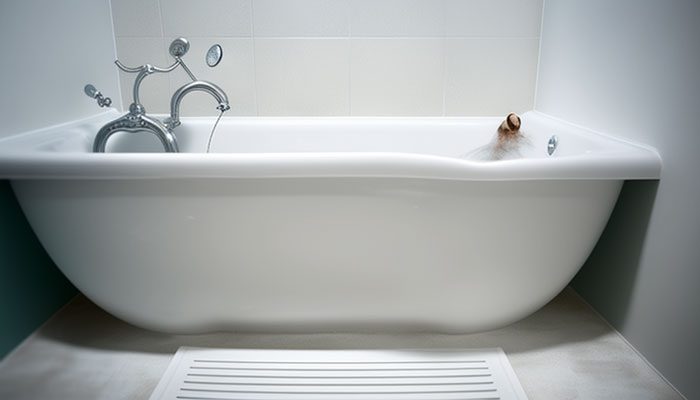
How to Utilize this Method:
To clean a Bath Fitter drain, you will first need to prepare the ingredients for each recipe chosen from online sources or books on natural cleaners.
Once these ingredients have been procured and gathered together in one place, start by pouring baking soda down the drain, followed by warm water if desired (to help activate the baking soda).
After allowing it to sit for up to five minutes, pour white vinegar down the drain, creating some foam and bubbles, indicating that it is working correctly. Once finished, rinse away any residue left behind with hot water before repeating this process (if necessary) until all dirt has been removed from the area being cleaned.
Drawbacks of this Method:
One drawback associated with using natural methods for unclogging a Bath Fitter drain may be their ineffectiveness against tough or stubborn buildup as harsher chemical solutions might be in certain situations.
2. Chemical Method for Cleaning

Chemical cleaners are an effective way to clean a Bath Fitter drain, particularly when dealing with deep clogs that require stronger agents than the natural methods discussed earlier can provide.
Benefits of this Method:
The primary benefit of utilizing chemical cleaners on a Bath Fitter drain is its ability to quickly dissolve even tough clogs in no time. This method often only requires one application instead of multiple applications with other methods like natural solutions or mechanical tools.
Also, most chemical cleaners are relatively inexpensive, which makes them an ideal choice for those who want a practical yet budget-friendly solution for their drains.
How to Utilize this Method:
The best way to use the chemical method for treating a Bath Fitter drain is by using sodium hydroxide, sulfuric acid, or other Bath Fitter drain cleaning agents. Sodium hydroxide is usually used in moderate concentrations, while sulfuric acid can be used in higher concentrations.
To start the process, you will need to pour either sodium hydroxide or sulfuric acid into your drain and hot water. This mixture should then be allowed to sit for up to 30 minutes. Afterward, use a plunger or snake device to help loosen any blockages that may be present in the pipes.
Once all clogs have been cleared out, flush the area with hot water several times until all traces of the chemicals are removed from your drains. Remember never to mix different cleaning products or acids, as this could create hazardous fumes if done incorrectly.
Drawbacks of this Method:
One potential drawback worth noting when using chemical cleaners on your bathroom drain is that they could potentially damage the pipes over time due to their harsh ingredients, so it’s important not to overuse them
3. Mechanical Method for Cleaning
Mechanical tools like augers or plungers can be great ways to clean out stubborn clogs from your Bath Fitter drain without resorting to harsher chemicals like those mentioned previously.
Benefits of this Method:
The primary benefit associated with utilizing hand appliances like augers or plungers on your bathroom drains is that they can effectively break apart even tough blockages without having to worry about the potential damage caused by harsh chemicals over time.
Moreover, when used correctly, these tools often provide immediate results within just a few minutes, depending on how severe the blockage was initially.
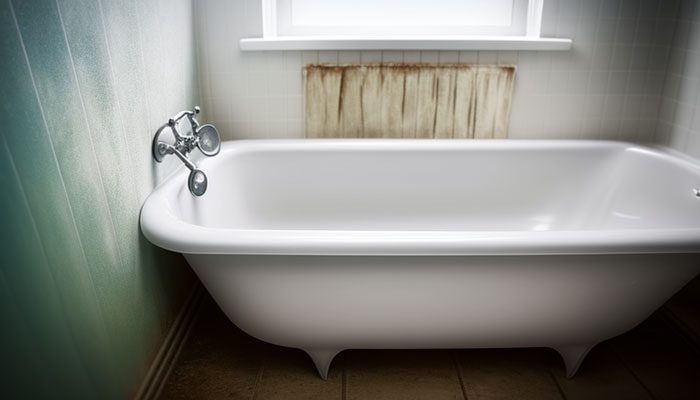
How to Utilize this Method
When utilizing a mechanical method like augers or plungers for cleaning your Bath Fitter drain, you begin by checking the trap assembly at the bottom of the drain so you can determine if any obstructions are present. If an obstruction is present, you can easily remove it using pliers or another tool that fits within the trap’s confines.
After removing any visible blockage from here, check further up in the pipes and down into the drain itself. If necessary, you can use a mirror inspection device to get a better look inside those tight spaces where obstructions may not be visible from above.
If you find anything blocking drainage there (such as hair or other debris), you should use a flexible hose attachment with your brush to carefully break up and remove said blockages from those areas.
Once all blockages are removed, and everything looks good in terms of cleanliness and drainage flow, reassemble all parts properly before running hot water through the pipes one more time just to ensure everything works well together afterward.
Drawbacks of this Method
One potential downside of using mechanical tools like augers/plungers to clean deep-rooted blockages from Bath Fitter drains is that they don’t always completely resolve the issue, especially if foreign objects (like jewelry) have become lodged inside the pipe itself.
Furthermore, they also tend to be quite labor-intensive, requiring considerable energy/strength to operate correctly even long periods won’t necessarily guarantee a successful outcome either, so try alternative means first whenever possible.
Preventative Maintenance Tactics for Cleaning Bath Fitter Drains
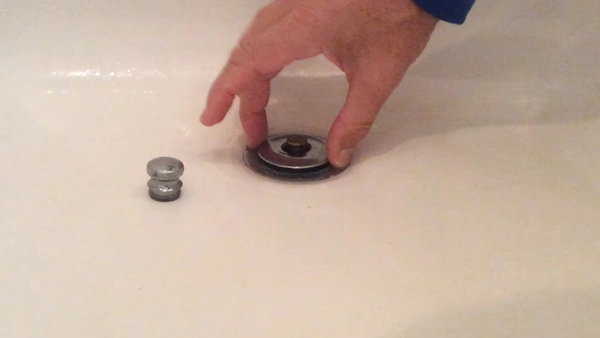
Bath Fitter drains need regular preventive maintenance to ensure they remain in good condition. This includes:
1. Make Sure to Trap Hair: It is essential to install a mesh strainer over the Bath Fitter drain opening to catch any loose hairs before they clog up the drain pipe. This mesh strainer should be checked regularly, and any trapped hairs should be removed immediately before they can accumulate.
2. Clean Shower Drains Regularly: Regular cleaning is necessary to keep your Bath Fitter drain in working order. This means performing weekly or biweekly regular maintenance by pouring hot water down the drain and removing any visible debris with a bent wire hanger or similar tool.
3. Use Chemical Cleaners Every Few Months: To maintain clean Bath Fitter drains regularly, you must use a drain cleaner at least once every few months. This will help break down any accumulated soap scum, oils, and grime that may have built up over time and could potentially cause clogs or blockages in the pipes.
4. Run Boiling Water Down: Run boiling water down the Bath Fitter drain weekly to prevent clogs and maintain proper drainage. This helps to break up any accumulated debris and soap scum in the pipes, allowing them to drain properly.
5. Use an Auger for Deep-Cleaning Sessions: For more serious clogs or buildup, it is recommended that you use an auger when deep cleaning with your Bath Fitter drain once every three months or so.
6. Regularly Inspect All Gaskets: Inspecting all gaskets associated with your Bath Fitter drain is another key element of preventative maintenance in avoiding clogs and buildup in your pipes. Look at both sides of each gasket carefully, paying particular attention to cracks and signs of corrosion, which could indicate a need for repair or replacement.
Can You Use Bleach to Clean a Bath Fitter Drain?
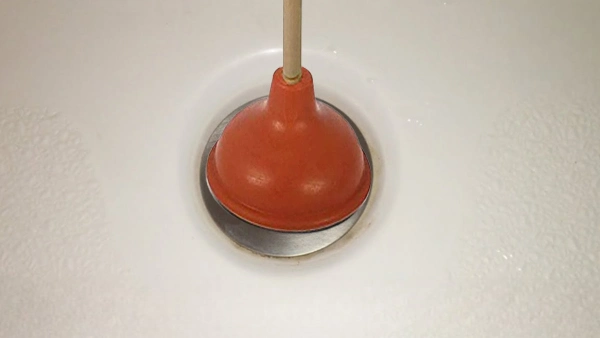
Yes, you can use bleach to scrub a Bath Fitter drain, but it should only be used as a last resort and with extreme caution. Bleach is very caustic and can corrode metal pipes, damage sealants, and cause discoloration over time.
Before using bleach to clean your drain, you should exhaust other options, such as using a specialized cleaner specifically formulated for Bath Fitter drains. Also, bleach should never be used on enamel or plastic surfaces as it can cause irreparable damage.
If you do choose to use bleach in your drain, it is important that you thoroughly flush the area with water afterward to prevent any long-term damage from occurring.
Relevant Article: What is the lifespan of drain cleaning gloves?
Can you use Epsom salts in a Bath Fitter Drain to Clean it?
Epsom salts are not recommended for use in a bath fitter drain due to their high mineral content, which could clog up the pipes if trapped inside the system over time.
While Epsom salts may provide some short-term benefits, such as cleaning away soap scum or helping to clear out any debris from the pipe walls, their abrasive nature has been known to cause scratches and permanent damage if not properly flushed out of the system regularly.
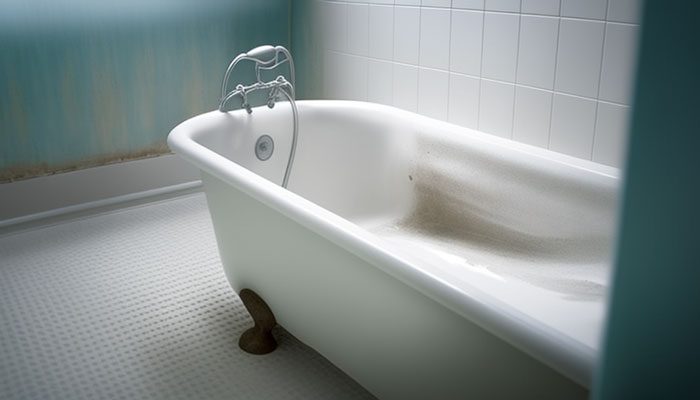
Is There Anything I Should Avoid When Cleaning My Drain?
When dealing with a Bath Fitter drain, there are certain products you should avoid using as they may damage surfaces or cause further issues with your drainage system: never use harsh chemical-based cleaners such as ammonia, which may damage the surface of your shower or acrylic bathtub.
Avoid abrasive cleaners that contain harsh chemicals such as hydrochloric acid, which can corrode metal surfaces. Also, steer clear of caustic soda, which can create hazardous fumes when mixed with other chemical agents & never use boiling water on plastic pipe fittings as this could warp plastic components in your fixtures.
Bath Fitter Drains: Clean Them Carefully
Cleaning your Bath Fitter drain regularly is an important part of maintaining efficiency and ensuring it lasts for years. With the proper tools and supplies, unclogging a bath fitter drain isn’t too difficult and is definitely worth the effort to keep your home free from clogs or foul odors caused by mold buildup.
Preventative maintenance, such as using vinegar or Epsom salts, will help keep your drain clear of debris and anything else that could cause it to back up over time. Just ensure never to use harsh chemicals such as acids on your bath fitter drain as they could damage its surface and cause further issues.

